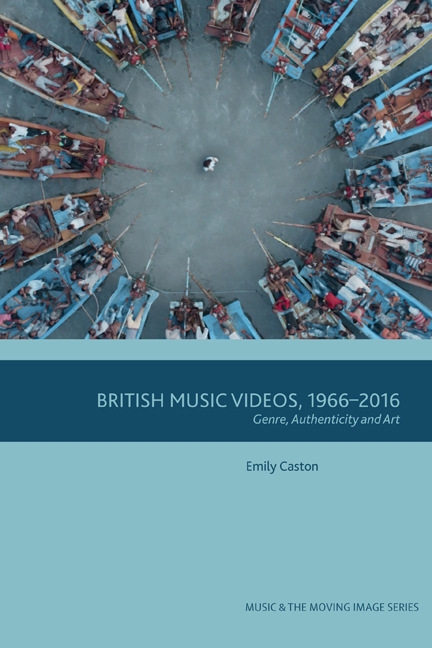Summary
Music video is an editors’ medium. In this chapter, I give a brief history of the changing processes editors and directors have used to cut their films during the period 1966–2016, and examine some differing editing styles and post-production effects that have had a major impact on British music video aesthetics since the mid-1960s. Other than directing, editing is perhaps the only element of making videos that has received systematic attention in scholarship (e.g. Goodwin 1992, Vernallis 2001 and Korsgaard 2017). Many of these arguments were advanced on the basis of a small handful of often American videos. Vernallis argues that, unlike mainstream Hollywood film, music video is not a slave to continuity editing and does not need to preserve time and space in the service of a narrative (2001); the primary aim of a music video is to sell a star and a song, not a story. For Vernallis, editing in music videos responds to rhythmic, timbral, melodic and formal musical features and has more in common with the disjunctive edits of the Russian formalists – Kuleshov, Pudovkin and Eisenstein – than the editing styles of mainstream Hollywood fiction directors. Vernallis points out that it also has similarities to the editing styles of the Nouvelle Vague, often using the ‘graphic match’ (which joins two frames of similar compositional colour and structure) and the ‘jump cut’ (brusque edits that make a dramatic change in terms of content, colour or scale) to join shots. Calavita talks of an ‘MTV aesthetic trope’ arising from ‘manic editing that often features flash-cuts, jump-cuts, and the stirring together of varied film stocks, colors, and speeds’ (Calavita 2007: 16). Dancyger (2014), for example, sees the legacy of this style of editing in Natural Born Killers (1994) and Crouching Tiger, Hidden Dragon (2007).
What is often missing from these discussions of editing styles in music video is an account of the creative and social role of the editor in music videos, as distinct from other screen industries. Like the director, an editor is often one of the first people to hear a planned new release. He or she gets to experience the track in its pure emotional form – before the critics, DJs, VJs and fans have interpreted it, before it's been licensed for commercials and films.
- Type
- Chapter
- Information
- British Music Videos 1966 – 2016Genre, Authenticity and Art, pp. 39 - 54Publisher: Edinburgh University PressPrint publication year: 2020



